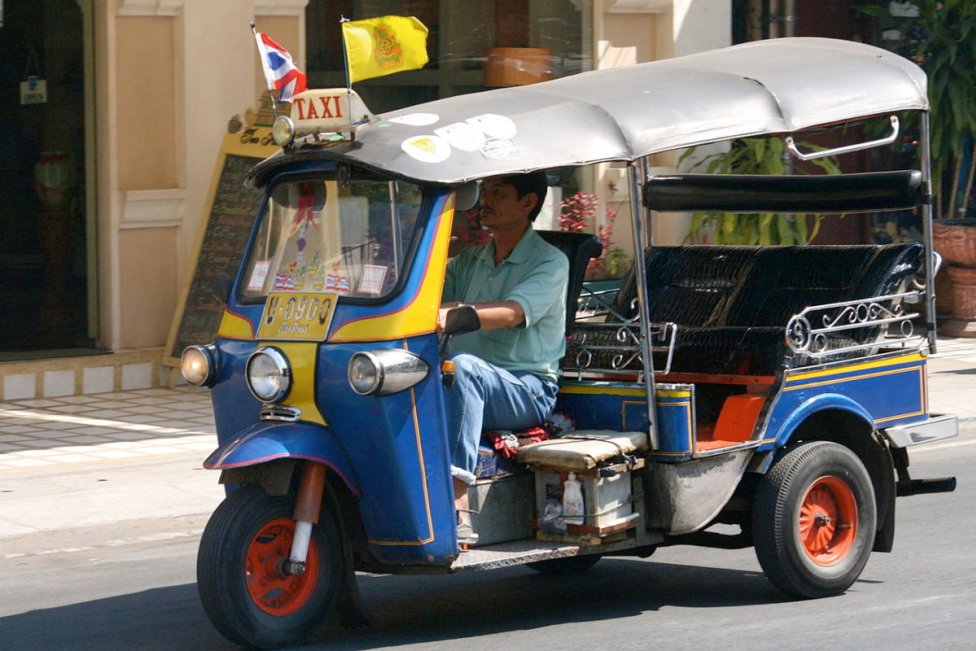Profile
Blog
Photos
Videos
Have been so busy the past few days that it hasn't been possible to write. We spent a couple of fabulous days at Phonsavan (also known as Xieng Khouang, which is the name of the province too) and the Plain of Jars after flying up on Lao Airlines from Pakse in the south of Laos. I'd like to emphasise here to those who are not so familiar with travelling in this part of the world, that it is all relatively EASY compared with when I started my adventures in 1968 (Penn Tour 343 from Calcutta to London). You can pay in lots of places with credit cards, there are ATMs all over the place, and hotels, Internet cafes and private companies (eg Diethelm) offer day tours. There are bottles of purified water in the fridge in the hotels and so far, after being on the road for 2 weeks in Cambodia and Laos, we haven't needed to resort to any of the many medicines we brought with us from Vienna. I adore milk- and fruitshakes (known in these climes as "smoothies", either with fruit or milk and fruit), which appear to be a popular drink here in Laos, and drink them regularly, and also eat the lettuce leaves which are a basic ingredient of most typical Lao dishes, and, so far, there have been no ill effects. My Internet card is about to expire, so more tomorrow (if you stay at hotels, there's usually a computer, but sometimes you have to pay for it and sometimes you don't. Everyone else, who stays at a guesthouse (often just as good, if not better than hotels, we hear), has to go to the local Internet cafe, where photos can also be loaded onto CD-Roms).
Mon. 31.03.08: About to fly to Luang Prabang but want to say a little about the Plain of Jars (auf Deutsch: "Ebene der Tonkruege") and Hotel Maly in Phonsavan first. We'd booked this hotel because the owner, Mr Sousath Phetrasy, sounded like one of those unique personalities you sometimes encounter in remote areas. He also speaks German, as a result of being an economics student in the former E. Germany for 6-7 yrs. Well, much to our disappointment, he was in Vientiane and had left some young staff in charge of the hotel, which meant that all we could do was see him onscreen in 2 of the 3 films that guests can watch there, both related to the so-called "Secret War" conducted by the USA in the mysteriously-named "Other Theatre" in Laos from 1964-72 and especially when the bombing had stopped in Vietnam in 1968. "The Ravens" dealt with a not-so-nice trip down memory lane for a bunch of middle-aged Americans who had been based at the secret base of Long Cheng in the middle of Laos at that time and Sousath was their guide (in 2003 or so). The other film, "Bombies"' was about the horrific effects - still today, nearly 40 years later - of the cluster bombs used illegally by the Americans on the local people from the eastern part of Laos. Sousath's bio. is a classic example of what the bombing did to local families: he lost contact with his for some years (his father, Soth Phetrasy, was the very prominent Pathet Lao representative in Vientiane for a while), lived in a (very special) Phetrasy family cave for a few, and finally, being lucky enough to survive, was reunited with his family, studied in Germany and came to live in Phonsavan in the 1990s. His entrepreneurial spirit, obvious from the various businesses he proceeded to run in Vientiane after the communist Pathet Lao had finally booted all the Americans out of the country in 1975, came to the fore in Xieng Khouang, where he set to work clearing the areas containing huge stone "jars" from "UXO" or "unexploded ordnance". A lot of the American bombs and other weapons he found are on display at the Maly Hotel - odd companions for the breakfasting and dining guests! His knowledge of the location of his family's home in the "semina" (= "re-education") province of Houaphan (Sop Hao village) led to the Australian journalist and author Christopher Kremmer's "discovery" of that selfsame house as being the one where the Lao royal family had been incarcerated until their untimely deaths.
Sousath apparently succeeded in convincing the government (still communist) that the "Plain of Jars" could be opened up as a tourist site, with specific paths marked clearly so as to prevent the tourists being blown to smithereens en route. We were taken by his staff (Sousath Travel) to the 3 main sites (rds to Sites 2 & 3 appalling - like Outback Australia) and quizzed by our Hmong guide on the theories we'd heard to explain the origin of the jars. Various people/archaeological teams have been there over the years, the latest being a UNESCO one just a few yrs ago. It seems there are more of these massive, more than human-size jars in Sulawesi, Indonesia, and also somewhere in Malaysia. They may be about 2500 yrs old. The theories as to what they were for vary from rice-wine containers for a victorious king to tombs for human remains or for grave offerings. Nobody really knows. We and our new travelling companion, Ogino Yoichi san, a 65-year-old former company-owner and now travel writer from Atami, Shizuoka, Japan, who has visited all except 2 countries of the world (Kosovo and Montenegro), were absolutely fascinated by what we saw and also by the location of most of the jars, on the tops of hills. Interestingly, at each site we also encountered Brits in vintage cars - a Rolls and a Lotus for instance - who were taking part in the Tiger Rally from KL in Malaysia to Hanoi in Vietnam!
See www.tigerrally.co.uk and http://tigerrally.blogspot.com/
http://www.ancient-origins.net/ancient-places-asia/mysterious-plain-megalithic-jars-001072#!bzXU6C
- comments










